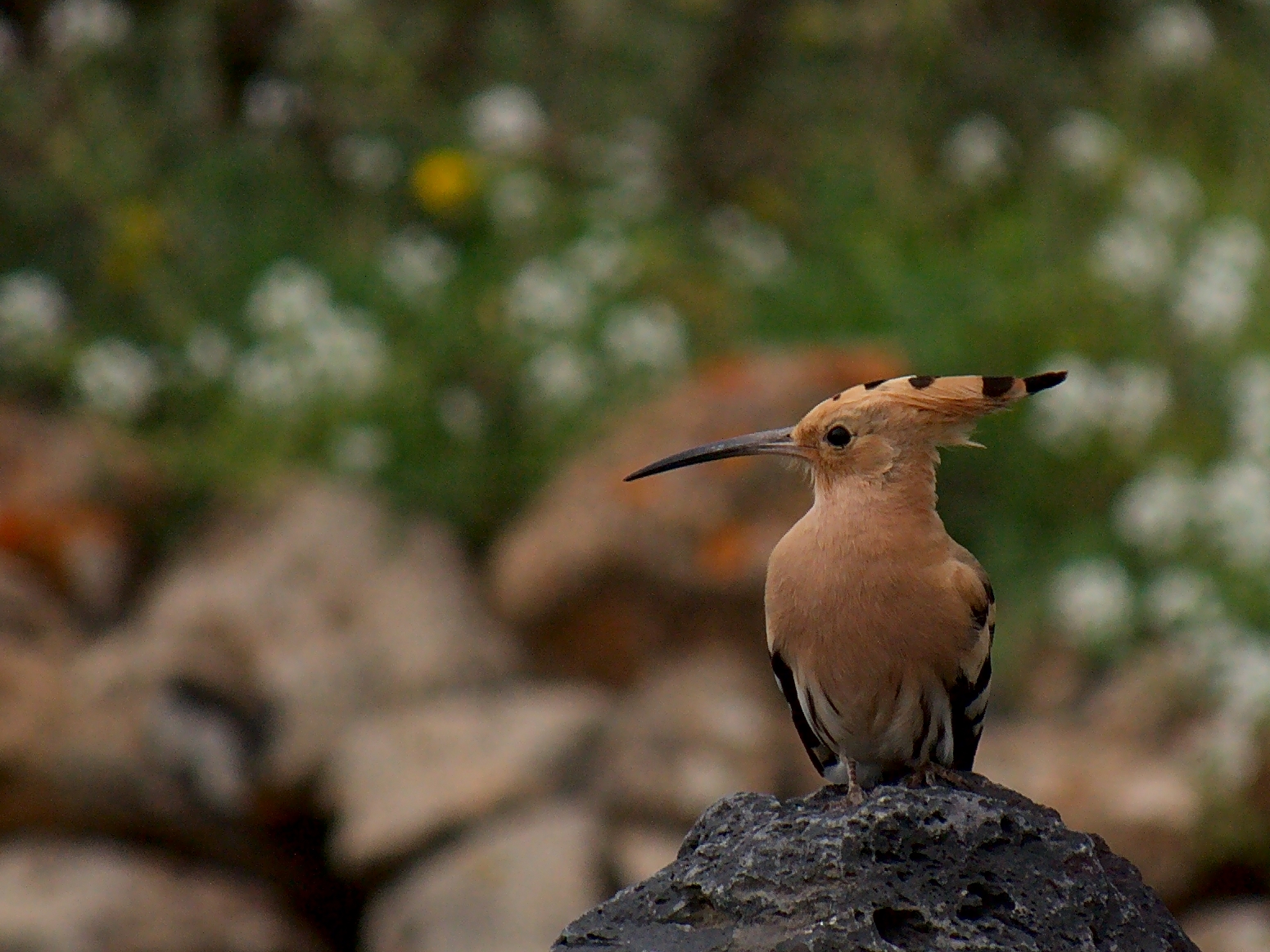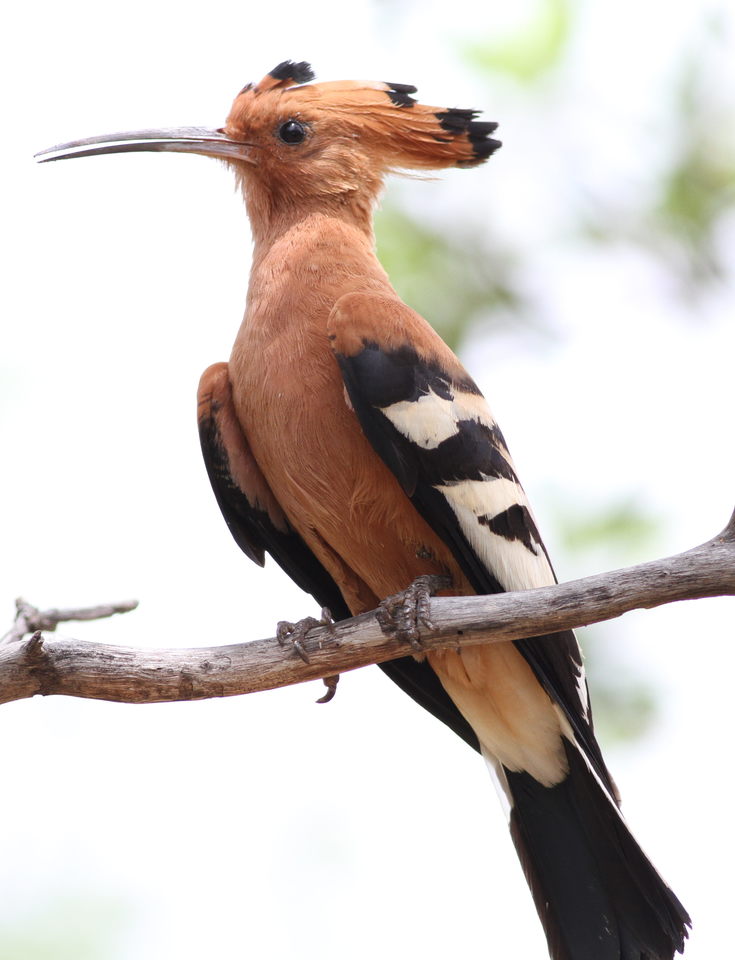
Eurasian Hoopoe by Jaiprakashsingh, CC BY-SA 3.0
Etymology: Hoopoe
First Described By: Linnaeus, 1758
Classification: Dinosauromorpha, Dinosauriformes, Dracohors, Dinosauria, Saurischia, Eusaurischia, Theropoda, Neotheropoda, Averostra, Tetanurae, Orionides, Avetheropoda, Coelurosauria, Tyrannoraptora, Maniraptoromorpha, Maniraptoriformes, Maniraptora, Pennaraptora, Paraves, Eumaniraptora, Averaptora, Avialae, Euavialae, Avebrevicauda, Pygostaylia, Ornithothoraces, Euornithes, Ornithuromorpha, Ornithurae, Neornithes, Neognathae, Neoaves, Inopinaves, Telluraves, Afroaves, Coraciimorphae, Cavitaves, Eucavitaves, Picocoraciae, Bucerotiformes, Phoeniculidae, Upupidae
Referred Species: U. africana (African Hoopoe), U. antaios (Saint Helena Hoopoe), U. epops (Eurasian Hoopoe), U. marginata (Madagascan Hoopoe)
Status: Extinct – Extant, Least Concern
Time and Place: Between 12,000 years ago and today, in the Holocene of the Quaternary


Hoopoes are known from all over the Eastern Hemisphere

Physical Description: Hoopoes are extremely distinctive birds! They have very long, thin, and curved bills that extend out greatly from their heads, and huge crests on their heads that are easily spotted. They have long, thin bodies, and feet built for perching. Their wings are very square-ish, and they have shorter tails than other birds. However, their coloration is decidedly where they are most distinctive of all. They have bright orange heads, with orange crests – but the crests end in very slight white bandings and then black tips. Their bodies are orange, but their wings and rumps and tails are black and white striped all over! They are such beautiful, distinctive birds. The shades of orange can differ in brightness or redness based on species (for example, the African Hoopoe tends to be redder than the Eurasian Hoopoe), but they do tend to be overall similar to one another in appearance. Living species range between 19 and 32 centimeters long; the extinct Saint Helena Hoopoe, though it had smaller wings, probably could have reached 36 centimeters long.

Madagascan Hoopoe by Charles J. Sharp, CC BY-SA 4.0
Diet: Hoopoes primarily feed on insects, especially larvae, though some larger animals are also fed upon by these animals.

Common Hoopoe by Charles J. Sharp, CC BY-SA 4.0
Behavior: Hoopoes are very curious, adventurous birds, spending a lot of their time foraginging on the ground – they’ll dig with their bills into soft earth, using them to turn over leaves and probing into the mud and dung for insects and other invertebrates. They’ll even use their bills to prise off the bark from trees, or forage for insects in lichen! Sometimes, these birds also smash their food against the ground to They’ll usually forage in pairs or alone, spending a lot of their days looking for food. Some Hoopoes – especially the Madagascan Hoopoe – will forage in even slightly larger groups, of up to six individuals. Fascinatingly, Hoopoes have their own version of Penicillin – Anting! They’ll find piles of ants and roll around in them, allowing the ants to cover their feathers. The ants then secret substances that will kill bacteria, fungi, and other insects – protecting the Hoopoe (and other birds that Ant) from illness! These birds also take dust and sand baths to clean themselves; they’ll also sunbathe by spreading out their wings and tail low to the ground and tilting their heads up!

Madagascan Hoopoe by Charles J. Sharp, CC By-SA 4.0
Hoopoes are distinctive in one very special way that lead to its name – their voice! They literally make calls that sounds like “hoo-poo-poo” and “hoop-oop hoop-oop” – leading to the name, Hoopoe, as well as the genus name, Upupa, and the species name of the Eurasian species, epops. Interestingly enough, the Madagascan Hoopoe does not make this sound – but rather, more cooing sounds, like doves. These birds will also make harsh, scolding calls, trills, and hisses, depending on the situation. The females and males will communicate primarily in trilling sounds while watching out for their nests. These birds are often sedentary, not migrating over long distance, but northern populations usually do come south in the winter to avoid colder climates, creating a variety of populations with very distinctive seasons and migrational patterns from one another within the species.
Saint Helena Hoopoe by Apokryltaros, CC BY 2.5
Hoopoes are monogamous each breeding season (which varies throughout the year as Hoopoes live all over the Eastern Hemisphere), forming strong pair bonds (that only last for that period of time). Males make very frequent calls to establish their territories, and they often fight with each other very brutally – including stabbings that can leave their opponents blinded. Females will then mate with the winners of these contests, and together they make nests out of holes in trees and walls with very narrow entrances. They usually aren’t lined with much. The female then incubates the egg, while the male defends her and the nest. Clutch size tends to depend on location, varying between 4 and 12 eggs per nest. They are incubated for nearly three weeks. At hatching, the chicks are very white and fluffy after a few days, and the crest develops after two weeks. The chicks are able to leave the nest after about a month, though they still stick with their families for a little while. Sometimes, when males defeat each other and replace each other in the mated pair, they will kill the offspring of the replaced male. Females can produce foul-smelling liquid, as do the babies, to protect themselves from predators – since they smell like rotting meat, they can fend off meat-eaters and parasites, and potentially fend off bacteria. Chicks in the nests also are able to literally poop at intruders, helping them to protect themselves! After leaving the nest, they stay with the parents for another week as they gain their bearings; they then become sexually mature between ages one and two.

Eurasian Hoopoe by Frank Vassen, CC BY 2.0
Ecosystem: Hoopoes live mainly in open country – pastures, orchards, steppe, dry savanna, wooded savanna, short grassland, and bare ground. They congregate near scattered, isolated trees for their roosting and nesting. They do need perches and shade, but they want the trees they get these services from to be rare in the environments – so they can go down to the ground to get their food! They are fed upon by herons, falcons, and many other birds of prey.

African Hoopoe by Derek Keats, CC By 2.0
Other: Most hoopoes are not currently threatened with extinction – they are extremely common, widespread birds, that are even protected in many localities (being highly venerated in many cultures – it’s even mentioned extensively in the Quaran – and made the national bird of Israel; it is also considered a pest controller and thus is protected on that front also. Some local populations, such as those in Morocco, are more threatened due to local practices (such as selling them for medicine), but overall they seem to be doing well. In fact, there are probably as many as 10 million Hoopoe around today, if not more. Still, in more northern countries such as Germany they are more endangered, primarily due to changes in habitat, hunting, and human activity giving pressure to the populations. The numbers in Madagascar are slightly vulnerable too, given forest clearance. Hoopoes are closely related to the Hornbills!

Saint Helena Hoopoe by Scott Reid
Species Differences: The four species primarily differ based on location: The African Hoopoe is found in Africa; the Eurasian Hoopoe is found in Eurasia; the Madagascan Hoopoe is known from Madgascar: and the late Saint Helena Hoopoe – now extinct – was known from the island of Saint Helena off the coast of Africa! The Saint Helena Hoopoe differed from the other species in other ways, too – it had smaller wings, was somewhat larger, and was probably flightless! A giant flightless Hoopoe! And, like most large flightless birds of the recent past, it went extinct due to human activity on the island – this time, sometime in the 1500s.
~ By Meig Dickson
Sources Under the Cut
